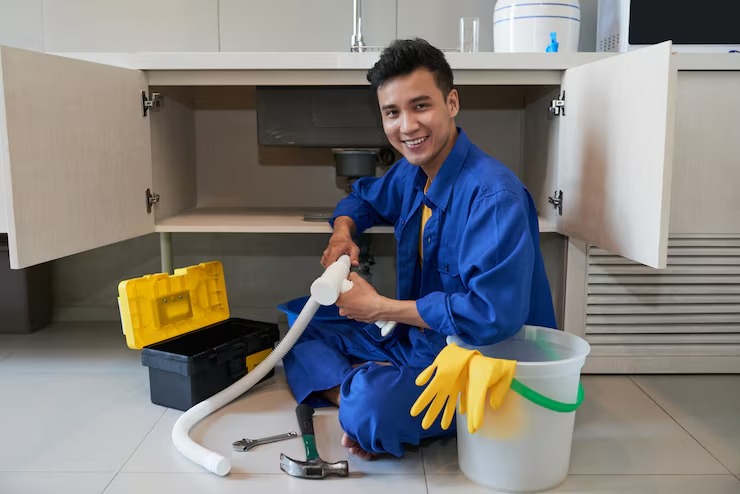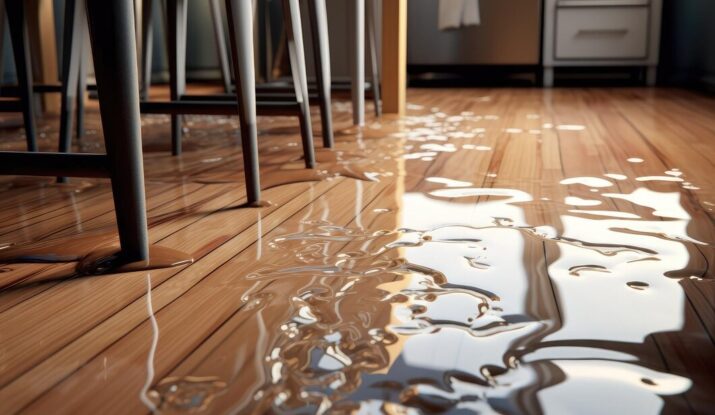Water damage can happen unexpectedly, whether from a burst pipe, flooding, or a roof leak. When it strikes, acting quickly is crucial to prevent further damage and mold growth. Water damage restoration is the process of cleaning, drying, and repairing your home to return it to its original condition. It involves more than just removing water—it includes assessing structural damage, sanitizing affected areas, and ensuring your property is safe and habitable.
A professional water damage restoration team uses specialized tools and techniques to remove moisture hidden in walls, floors, and ceilings. Understanding what to expect during this process can help ease stress and allow homeowners to respond effectively. From the initial inspection to the final stages of repair, knowing each step ensures you’re prepared and confident in restoring your home after water-related incidents.
The Initial Inspection and Damage Assessment
The first step in water damage restoration is a thorough inspection of the affected property. Professionals assess the extent of the damage, identify the source of the water intrusion, and categorize the level of contamination. This evaluation determines how much of the structure and belongings are affected, helping restoration teams create a detailed action plan.
Moisture meters and thermal imaging tools are used to detect water hidden behind walls and under floors. The inspection also classifies the water damage based on its source—clean, gray, or black water—which influences the safety measures and equipment needed. Understanding the type and scope of damage ensures the proper steps are taken to remove water and restore the space effectively. This initial assessment is crucial for developing an accurate estimate and timeline for the project. Water damage restoration begins with clarity and direction, giving homeowners peace of mind that their property is being properly handled from day one.

Emergency Water Extraction to Stop Further Damage
Once the assessment is complete, the next step in water damage restoration is emergency water extraction. Standing water must be removed quickly to prevent it from seeping deeper into walls, floors, and furniture. Restoration professionals use high-powered pumps, vacuums, and extraction tools to remove large amounts of water efficiently. The faster this process happens, the less likely you are to face costly secondary damage like warping wood, crumbling drywall, or mold growth.
This stage also involves moving furniture and belongings out of harm’s way to minimize damage. If the water has saturated carpeting or padding, those materials may need to be removed for proper drying. Timely extraction plays a vital role in reducing restoration costs and protecting your home’s structure. Water damage restoration crews are trained to act fast, containing the damage and preventing further deterioration before beginning the drying and sanitizing stages of the process.
Drying and Dehumidification of the Affected Areas
After water is removed, the next phase of water damage restoration is drying and dehumidification. Even if all visible water is extracted, moisture can remain trapped in building materials, which can lead to mold growth and structural damage if left untreated. Restoration teams use industrial-grade air movers and dehumidifiers to pull moisture out of walls, flooring, and the air itself. Monitoring tools track the drying progress to ensure every surface reaches proper humidity levels.
This process can take several days depending on the extent of the damage and how deeply water penetrated. Technicians also check for any materials that may need to be discarded, like insulation or drywall, if they are beyond saving. Proper drying is critical to preventing long-term issues and ensures the environment is safe before repairs begin. Water damage restoration isn’t complete without this step, as it prepares your home for the final phase of full recovery.
Cleaning and Sanitizing All Surfaces and Materials
Water damage often brings more than just moisture—it can introduce bacteria, viruses, and other harmful contaminants into your home. That’s why water damage restoration includes a deep cleaning and sanitizing phase. After drying is complete, professionals disinfect affected surfaces using antimicrobial and antibacterial treatments. This step ensures that your home is safe and free from potential health hazards. Carpets, upholstery, and belongings are cleaned or discarded based on their condition and exposure to contaminated water.
Air scrubbers and fogging machines may be used to deodorize and purify the indoor environment. Items that can be salvaged are carefully restored, while others are documented for insurance purposes. This thorough cleaning process helps prevent odors, mold growth, and lingering contaminants from becoming future issues. Water damage restoration not only restores the appearance of your home but also addresses the invisible threats that could affect your health if left untreated.
Mold Prevention Measures and Inspections
Mold can start growing within 24 to 48 hours after water damage occurs, making mold prevention a critical part of water damage restoration. Even after visible water is removed, lingering moisture in walls, ceilings, and floors creates ideal conditions for mold spores to thrive. Restoration teams take proactive steps to prevent this by applying mold inhibitors during the cleaning process and conducting moisture readings to ensure all areas are fully dried.
In some cases, air scrubbers and HEPA filtration systems are used to remove airborne spores and reduce indoor humidity levels. If mold is already present, professional remediation may be necessary to remove contaminated materials and stop further spread. Inspections are done throughout the process to monitor for early signs of mold growth. With proper drying, treatment, and monitoring, water damage restoration professionals can prevent future mold problems and preserve the health and integrity of your home.
Structural Repairs and Material Replacement
Once cleaning and drying are complete, water damage restoration moves into the repair and rebuilding stage. This step involves replacing materials that were permanently damaged by water, such as drywall, insulation, flooring, and baseboards. In more severe cases, structural components like subflooring or framing may need reinforcement or replacement. Restoration teams coordinate repairs to restore the space to its original condition—or better.
Skilled contractors handle everything from repainting walls to reinstalling cabinetry and fixtures. The goal is to ensure that the home is both safe and visually restored, with no signs of past damage. During this phase, damaged personal belongings may also be returned or replaced, and detailed documentation is provided for insurance claims. Water damage restoration is not just about removing water; it’s about rebuilding what was lost and bringing your home back to full function, beauty, and comfort.
Final Inspection to Ensure Complete Restoration
Before the project is finalized, a thorough inspection is conducted to confirm that all aspects of water damage restoration have been completed successfully. Restoration professionals walk through the property to ensure that drying, cleaning, and repairs meet industry standards. Moisture levels are rechecked, surfaces are inspected for signs of remaining damage, and any lingering odors or concerns are addressed.
This final inspection provides homeowners with peace of mind and ensures no detail has been overlooked. It’s also an opportunity to go over documentation related to insurance claims, including before-and-after photos and service reports. If additional work is needed, it’s scheduled at this time to ensure complete satisfaction. The inspection ensures your home is clean, safe, and fully restored after the disruption of water damage. Water damage restoration concludes with confidence that your home is back in shape—and ready to be lived in again without worry or risk.

Working With Insurance During the Restoration Process
Navigating insurance claims can be one of the most stressful parts of recovering from water damage. That’s why many water damage restoration professionals help guide homeowners through the insurance process. From the initial damage assessment to final documentation, restoration teams provide detailed records that support your claim. This includes photographs, service descriptions, and lists of damaged materials. Many restoration companies work directly with insurance adjusters to streamline communication and speed up approval for necessary repairs.
Having this support can ease the financial burden and ensure you receive fair compensation. Homeowners benefit from having a knowledgeable partner who understands both the technical and administrative side of restoration. Water damage restoration is not just about physical recovery—it’s also about helping you navigate insurance claims with less stress. With the right help, you can move forward with confidence, knowing the restoration and reimbursement processes are being handled professionally and efficiently.
Conclusion
Water damage can be overwhelming, but with the right help, your home can be restored quickly and safely. Understanding what to expect from the water damage restoration process gives you peace of mind and allows you to act with confidence when disaster strikes. From initial inspection to final repairs, every step is important to protect your property and your health. At Good To Be Clean, we provide professional, prompt, and thorough water damage restoration services in El Dorado, Kansas. Our experienced team is ready to respond when you need us most. Don’t let water damage disrupt your life—call us today at (316) 320-6767 to schedule an inspection or emergency service. Let us help you restore your home and peace of mind.

